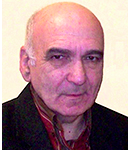Bioscope
Bioscope is a unique device that allows patients to carry out non-invasive procedures such as x-rays, standard eye exams, CT scan, MRI, ECG, and Holter monitoring, in the comfort of their own home. The device is connected to a software (LabView) that collects and analyzes the data.

Year founded
2010
Location
Yerevan, Armenia
Sector
Medical devices Industry, Biotech
Stage
Prototype
Members

Naira Paronikyan
General Manager

Rafik Sargsyan
Product Owner

Gagik Karamyan
Operations Manager

Armen Manukyan
Developer
The challenge
The main reason for creating Bioscope stems from the insight that major causes of deaths worldwide are diseases that are asymptomatic at early stages, which go on to cause complications that are very hard or impossible to cure. During the early stages, a person is usually not aware that they are suffering from a disease and after they find out, it can be too late. After getting the first symptoms, some people will go for screenings, however, many people don’t, which speaks to the high number of deaths.
There is a lot of research exploring the reasons why people avoid seeing a doctor. Some reasons may include: fear of painful and stressful procedures or the atmosphere at hospitals and clinics, fear of receiving bad news, lack of time for regular check-ups because of their work, inability to afford screenings or lack of trust in traditional methods.
The solution
Bioscope is a non-invasive, portable diagnostic device for early detection of various diseases. It’s a device that uses the data collected from patients with a particular disease to diagnose the disease in new patients. Bioscope gets signals from an organism approaching it and gives information about its physiological state. The signals from each disease are unique. As soon as a disease starts developing in the body, Bioscope receives signals and can tell if a patient has it or not. It will receive various types of signals from a person and our task is to identify the unique signal for a disease like, for example, breast cancer, and increase the accuracy of the diagnosis. As soon as we identify and define the unique signals for a disease, we will be able to identify if a new patient has it or not.



Results
Currently, we’ve collected data through our work with animals, which has a very high accuracy; however, in the case of identifying diseases in humans, we are aiming to reach 80 to 90% which is a very good indicator, as it will assist doctors in diagnostics. For the registration and analysis of signals from Bioscope, a complex software package was developed in the LabView software. The analytic program calculates the spectral distribution of Bioscope’s signals. It records the data, which enables comparisons to previously obtained data and makes conclusions. We have a patent application in the US (2007/0149866 A1). Now we have the initial version of the product which is marketed and sold to scientists for their experiments. Our initial experiments prove that Bioscope can identify the existence of cancer in animals and can also forecast if a drug will provide effective treatment or not.

